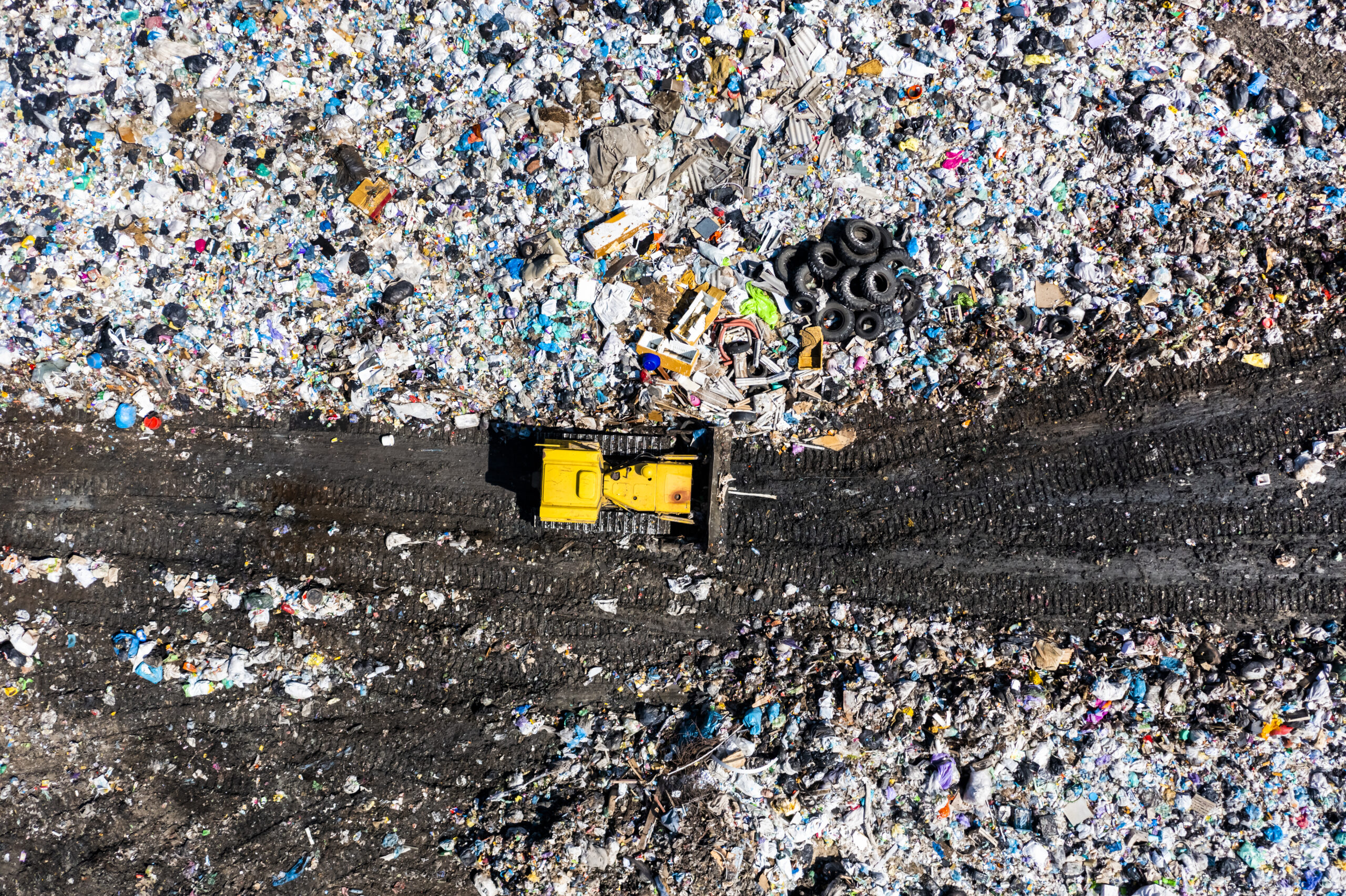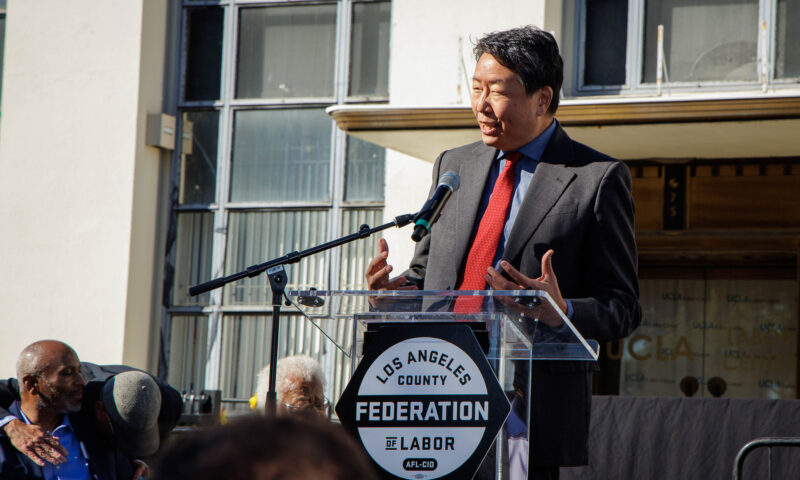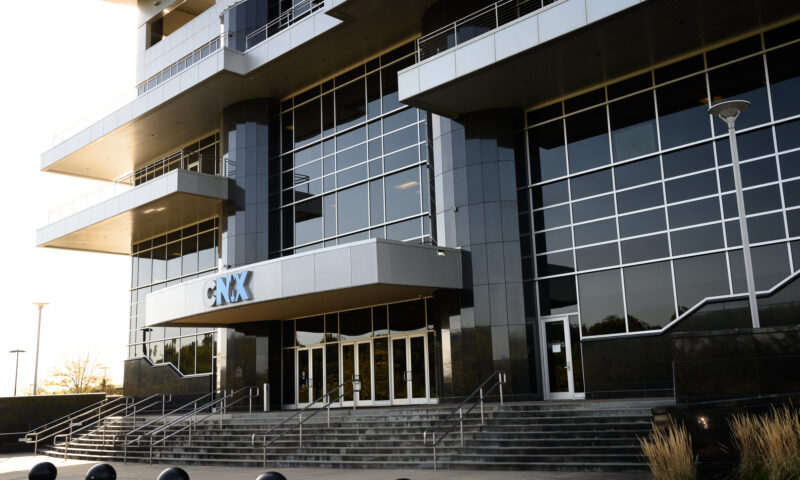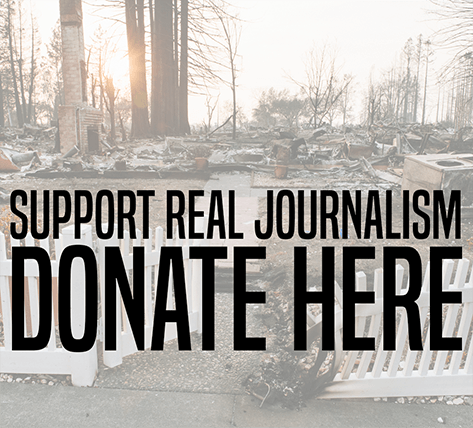Remember the banana peels, apple cores and leftover pizza you recently threw in the garbage? Today, your food waste, and your neighbors’, is emitting climate-warming greenhouse gases as it decomposes in a nearby municipal landfill.
Buried food scraps and yard waste at 51 dumps across Colorado generate an amount of methane equivalent to driving 1 million gasoline-powered cars for a year. About 80 times as potent as carbon dioxide as a greenhouse gas over a period of 20 years, methane accounts for 11% of global emissions that scientists say are warming the atmosphere and contributing to more intense and severe weather, wildfires and drought.
Landfills are the third-largest source of methane pollution in Colorado, after agriculture and fossil fuel extraction. Draft methane rules released last month by the state’s Department of Public Health and Environment would, for the first time, require some dump operators to measure and quantify methane releases and to fix leaks. The proposal mandates that waste managers install a gas collection system if their dump generates a certain amount of the climate-warming gas.
It also addresses loopholes in federal law that allow waste to sit for five years before such systems are required — even though science has shown that half of all food waste decays within about three-and-a-half years. The draft rule surpasses U.S. Environmental Protection Agency standards in the amount of landfill area operators must monitor for emissions. It’s set to be heard by the state’s Air Quality Control Commission in August.
Reducing methane emissions from landfills is one of the quickest and most efficient ways to slow global warming in the short term.
Proposed regulations require the elimination of open gas flares — burning emissions directly into the atmosphere — and urge the use of biocovers and biofilters, which rely on bacteria to break down gases. The 70-page draft also calls for more routine and thorough monitoring of a dump surface with advanced technologies like satellites, which recently recorded large plumes of methane escaping from a Denver-area landfill.
“We’ve had our eyes opened thanks to technology that has made the invisible, visible — now we know the extent of the problem, which is much greater than what estimates have portrayed,” said Katherine Blauvelt, circular economy director at Industrious Labs, a nonprofit working to decarbonize industry.
“When landfill operators fail to control leaks, we know harmful pollutants are coming along for the ride.”
Cancer-causing volatile organic compounds, such as benzene and toluene, escape with methane leaching from landfills. These chemicals also contribute to the formation of lung-damaging ozone pollution, an increasing problem for the 3.6 million people who live in the greater Denver metropolitan area.
Indeed, the region along the eastern slope of the Rocky Mountains ranked sixth in the nation for the most polluted air — with unhealthy ozone levels reported on one out of every 10 days, on average, according to the American Lung Association’s 2025 “State of the Air” report. The state is also woefully behind in its compliance with federal air quality standards.
State officials and environmental advocates agree that reducing methane emissions from landfills, which are easier to mitigate than cow burps, for example, is one of the quickest and most efficient ways to slow warming in the short term.
“Waste deposited in landfills continues producing methane for decades as it breaks down — and it’s one sector where Colorado has yet to directly take action to reduce these greenhouse gases,” said Tim Taylor, a supervisor in the state’s air pollution control division, in an online hearing last February on the proposed landfill methane rules.
Colorado’s draft regulations are similar to those in California, Oregon, Maryland and Washington, he added. More than 10 landfills in the state are already required under federal rules to have gas collection and control systems. Yet even with such technology in place, disposal facilities routinely exceed federal methane emissions caps.
The state’s health department has also identified a dozen municipal solid waste landfills, based on a preliminary analysis, that would be required to put such systems in place under the proposed rules, Zachary Aedo, an agency spokesman, said in an email to Capital & Main.
For larger landfill companies, figuring out which technology works to best monitor emissions from a dump’s surface is proving a complex challenge.
Many of these facilities are operated by counties, some of which expressed concerns about their ability to pay for such systems.
“We are a small rural county, and a multimillion-dollar containment system is going to be more than we can build,” testified Delta County Commissioner Craig Fuller at the February hearing. “The financial equation of this whole thing is absolutely mind-boggling — we are struggling as it is to provide health and human services.”
Other county officials embraced the proposed tightening of rules.
“Landfills across Colorado, including in Eagle County, are leading sources of methane pollution,” said Eagle County Commissioner Matt Scherr in a March 6 statement. “As a local elected official I support a robust rule that embraces advanced technologies to cut pollution, protect public health and help the methane mitigation industry thrive.”
For larger landfill companies, like Waste Management, which operates 283 active disposal sites nationwide, figuring out which technology works to best monitor emissions from a dump’s surface is proving a complex challenge. The company is testing technologies at facilities with different topographies and climate fluctuations to understand what causes emissions releases, said Amy Banister, Waste Management senior director of air programs.
“Landfills are complicated, emissions vary over time, and we have emissions 24/7,” said Banister at an online meeting last September of a technical group created by Colorado health department officials. “Drones produced a lot of false positives — and we need more work understanding how fixed sensors can be applied in a landfill environment.”
State health officials suggested municipalities could offset the costs of installing gas collection systems at disposal sites by converting methane into energy. Several landfill operations in Colorado currently have such waste-to-energy systems — which send power they generate to the state’s power grid.
“We are mindful of the costs of complying with this rule and how tipping fees may be impacted,” said Taylor, an air quality supervisor, at the February hearing. “Analyses conducted in other states of their landfill methane rules found there wasn’t an increase in tipping fees as a result of regulations over time.”
Tipping fees are paid by those who dispose of waste in a landfill. If operators passed on compliance costs to households, a state analysis found, the yearly average annual fee would increase $22.90 per household.
“These landfills are not only driving climate change, they are also driving a public health crisis in our community.”
~ Guadalupe Solis, director of environmental justice programs, Cultivando
Colorado’s push comes as the EPA issued an enforcement alert in September that found “recurring Clean Air Act compliance issues” at municipal solid waste landfills that led to the “significant release of methane,” based on 100 inspections conducted over three years.
Such violations included improper design and installation of gas collection and control systems, failure to maintain adequate “cover integrity” and improper monitoring of facilities for emissions.
To address gaps in federal regulations, which require operators to measure emissions four times a year by walking in a grid pattern across the face of the landfill with a handheld sensor, Colorado’s draft rules require third-party monitoring. Such measurements must be conducted offsite by an entity approved by the state’s air pollution control division that uses a satellite, aircraft or mobile monitoring platform.
The infrequency of such grid walks — which skip spots that operators deem dangerous — contributes to the undercounting of methane emissions from landfills, according to a satellite-based analysis. An international team of scientists estimated potent greenhouse gas emissions from landfills are 50% higher than EPA estimates. Satellites like one operated by nonprofit Carbon Mapper found large methane plumes outside the quarterly monitoring periods over the Tower Landfill in Commerce City, northeast of Denver.
The satellite allowed scientists to see parts of the landfill not accessible with traditional monitoring — measurements that found that such landfills are underreporting their methane emissions to state regulators, said Tia Scarpelli, a research scientist and waste sector lead at Carbon Mapper.
“Landfill emissions tend to be quite persistent — if a landfill is emitting when it’s first observed, it’s likely to be emitting later on,” she added. Scarpelli cautioned that it’s important for regulators to investigate with operators what was happening on the landfill surface at the time the leak was measured.
Tower Landfill’s operator, Allied Waste Systems of Colorado LLC, provided reasons for such large methane releases in a January 2024 report to the state’s health department, including equipment malfunctions. The fix for about 22 emissions events over the federal methane limits detected in August 2023 by surface monitoring: “Soil added as cover maintenance.”
Like many dumps across Colorado and the nation, the Tower Landfill is located near a community that’s already disproportionately impacted by emissions from industrial activities.
“These landfills are not only driving climate change, they are also driving a public health crisis in our community,” said Guadalupe Solis, director of environmental justice programs at Cultivando, a nonprofit led by Latina and Indigenous women in northern Denver. “The Tower Landfill is near nursing homes, clinics, near schools with majority Hispanic students.”
Physicians in the state warned that those who live the closest to dumps suffer the worst health effects from pollutants like benzene and hydrogen sulfide, which are linked to cancer, heart and other health conditions.
“People living near landfills, like myself, my family and my patients, experience higher exposure to air pollution,” testified Dr. Nikita Habermehl, a specialist in pediatric emergency medicine who lives near a landfill in Larimer County, at the Feb. 26 public hearing, “leading to increased rates of respiratory issues and headaches and asthma worsened by poor air quality.”
Copyright 2025 Capital & Main


 Pain & ProfitNovember 3, 2025
Pain & ProfitNovember 3, 2025
 Column - State of InequalityNovember 6, 2025
Column - State of InequalityNovember 6, 2025
 Latest NewsOctober 29, 2025
Latest NewsOctober 29, 2025
 Latest NewsOctober 20, 2025
Latest NewsOctober 20, 2025
 Latest NewsOctober 22, 2025
Latest NewsOctober 22, 2025
 Column - State of InequalityOctober 23, 2025
Column - State of InequalityOctober 23, 2025
 Column - California UncoveredOctober 24, 2025
Column - California UncoveredOctober 24, 2025
 Latest NewsOctober 31, 2025
Latest NewsOctober 31, 2025

